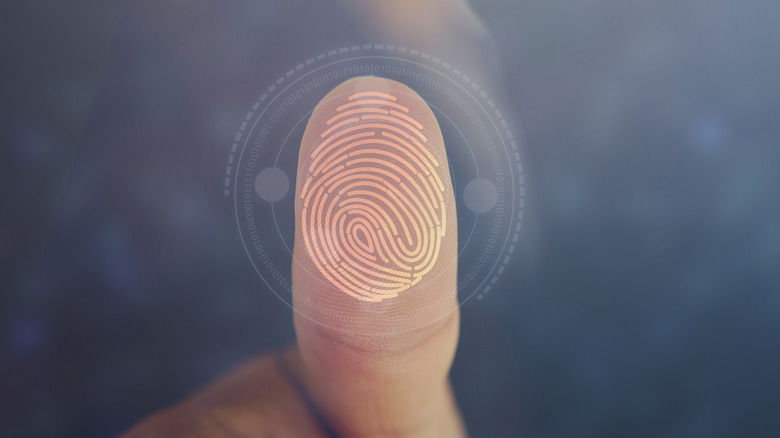The Real Reason Humans Have Fingerprints
Fingerprints are pretty mysterious. Humans have taken advantage of fingerprints as a way to find evidence to solve crimes, but their original purpose is a bit less understood. Historically, many scientists believed that fingerprints improve grip, but research has not borne this out, according to Live Science.
A more substantiated theory is that fingerprints aid touch. Research has found that fingerprints may make our fingers more sensitive, which is important because our sense of touch is essential when it comes to finding and eating food. Georges Debrégeas of Sorbonne University tells Live Science that having sensitive fingertips allows us to feel the textures of food so that we can avoid eating food that is rotting. Several other animals who rely on their sense of touch to find food also have fingerprints, says New Scientist. Another possible purpose of fingerprints is that they may prevent blisters, Debrégeas tells Live Science, but this theory has less scientific support behind it.
Why do people have unique fingerprints?
As if just the existence of fingerprints isn't enough of an enigma on its own, we also have the question of why everybody's fingerprints are unique. It is good that they are, because this has aided the justice system (via National Institute of Justice), but that doesn't make it any less perplexing. According to Washington State University, the pattern of fingerprints can be attributed to genetics and how the skin grew when inside the womb. Interestingly, even identical twins have different fingerprints. "The reason fingerprints are unique is the same reason individual humans are unique. Variation is the norm, not the exception," says David Conley, a professor at Washington State University.
Many other animals are similar in this regard. Individual leopards, zebras, and dolphins all have their own unique patterns, according to New Scientist. Individual humpback whales have their own markings under their tails, and dogs and cats have their own individual whisker patterns. There is plenty of variation within nature, and no two animals are exactly the same.


